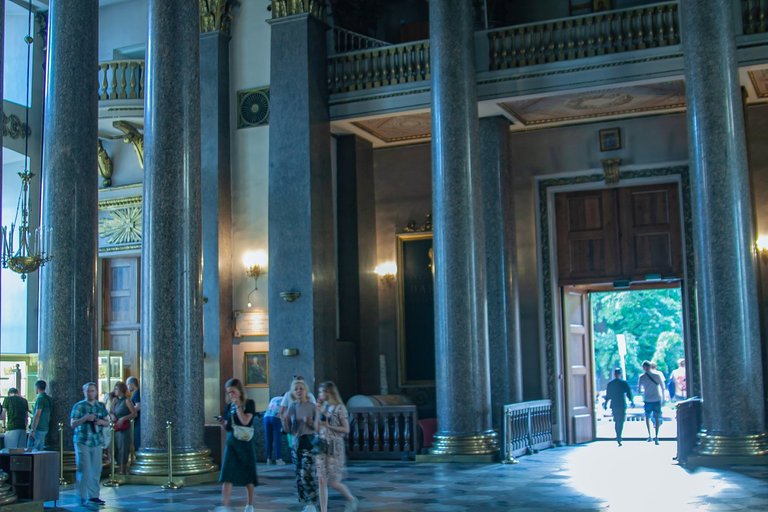
Hello to all my readers! Today I have planned for you to review my visit to the Kazan Cathedral in St. Petersburg. I will tell you some facts about this building and show you photographs taken inside and outside the temple.
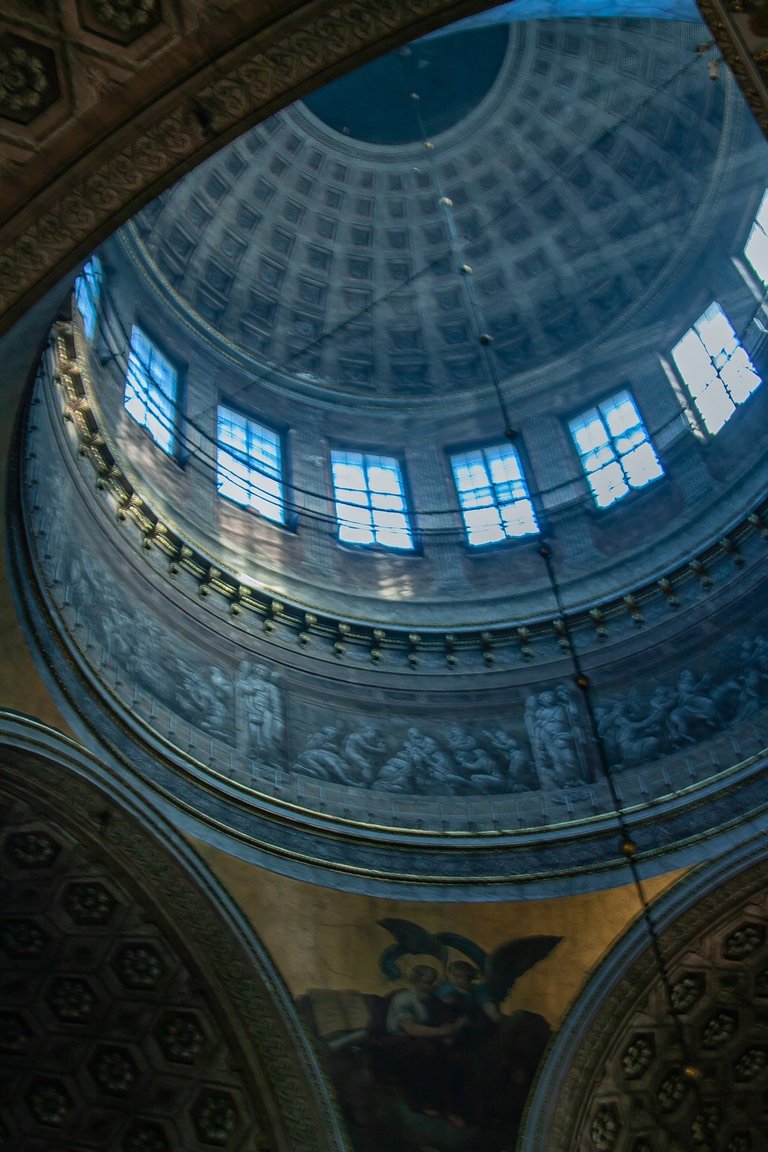
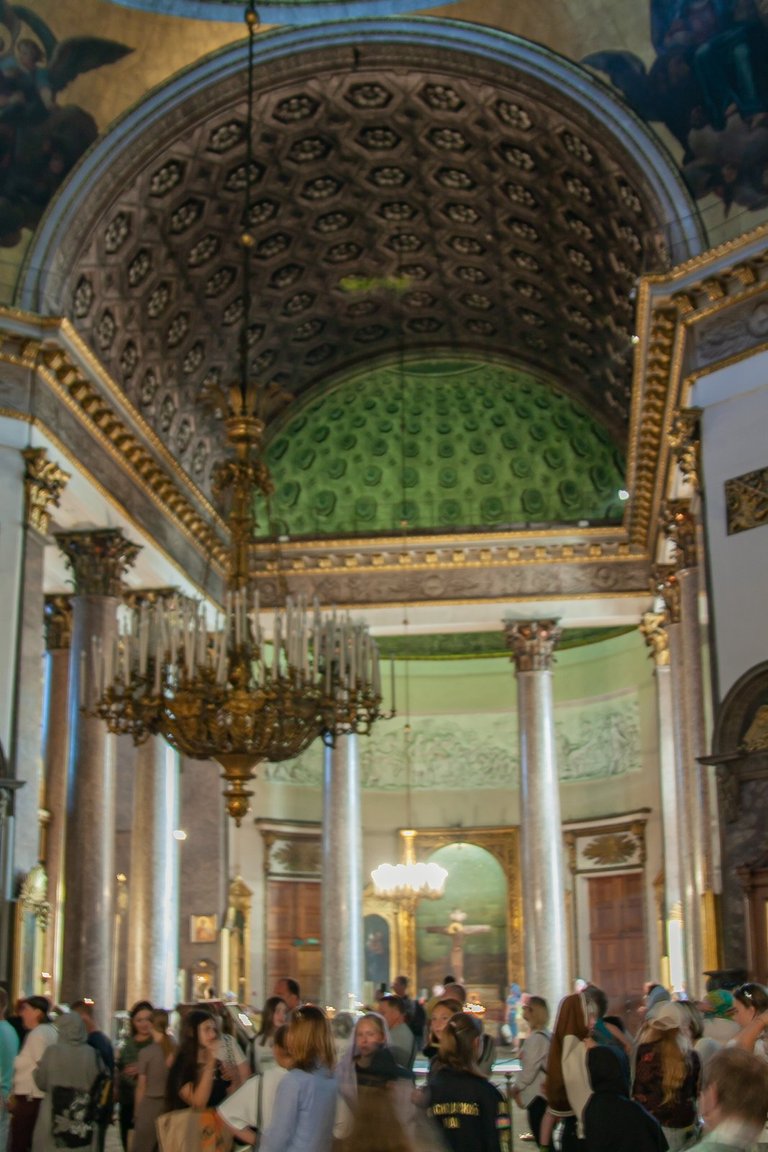
ONLINE REFERENCE: Kazan Cathedral was built according to the project of architect Andrey Nikiforovich Voronikhin from 1801 to 1811. It was built on the site of Nevsky Prospekt, where the modest Church of the Nativity of the Virgin was located. One of the main St. Petersburg shrines, the miraculous icon of the Kazan Mother of God, was kept in this church. The cathedral was built at the behest of Emperor Paul I precisely for this icon, as the Cathedral of St. Petersburg. At the request of Paul I, the external outlines of the cathedral resemble the Church of St. Peter in Rome. Thousands of workers were involved in the construction of the cathedral. The cathedral was built from materials exclusively of domestic, mainly Karelian origin. The height of the cathedral is 71.5 m. The internal columns are carved from huge granite monoliths, weighing up to 30 tons each.

If the cathedral is decorated with gray limestone from the outside, then everything is different inside. Granite columns are installed here, everything is arranged inside as in ordinary Orthodox churches in Russia. But if we compare the interiors of the Kazan Cathedral with St. Isaac's Cathedral, then everything is much more modest here.
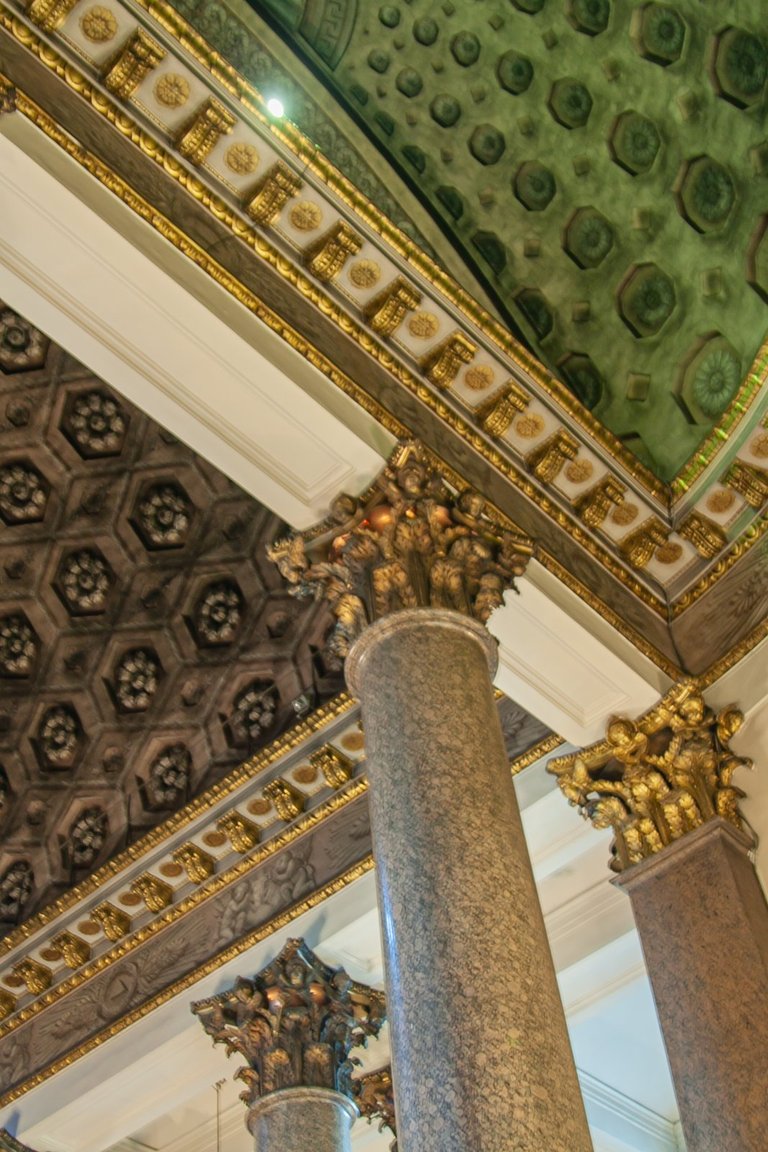
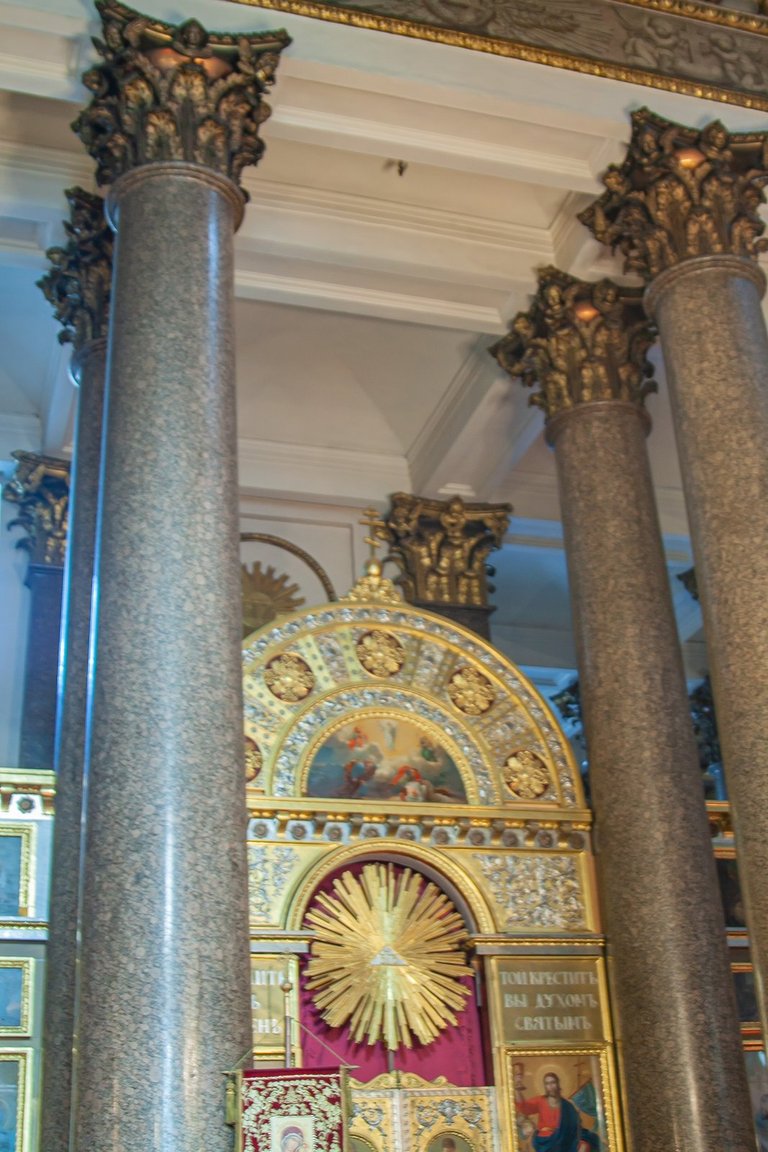
The ceiling height of the temple is amazing. Due to the fact that there are rather narrow galleries, it seems that the columns go up to an endless height. This discrepancy is brightened up by a lot of bronze chandeliers hanging low from the ceilings on long rods.
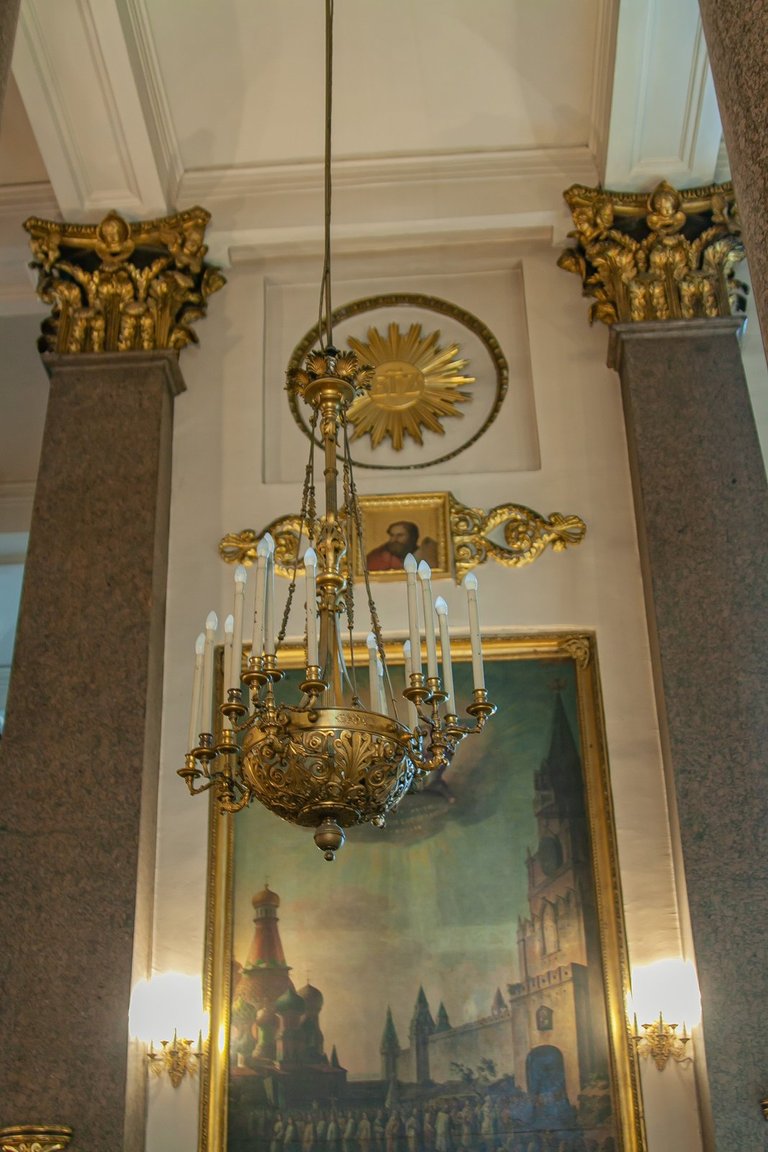
The lighting quality in the cathedral is quite poor. The light comes from small stained glass windows and windows located along the walls. The main dome itself is quite small compared to St. Isaac's and is not so transparent. The rays of the sun falling through the central lantern of the dome do not give strong diffuse illumination and everything here seems rather gloomy, as if in medieval castles.
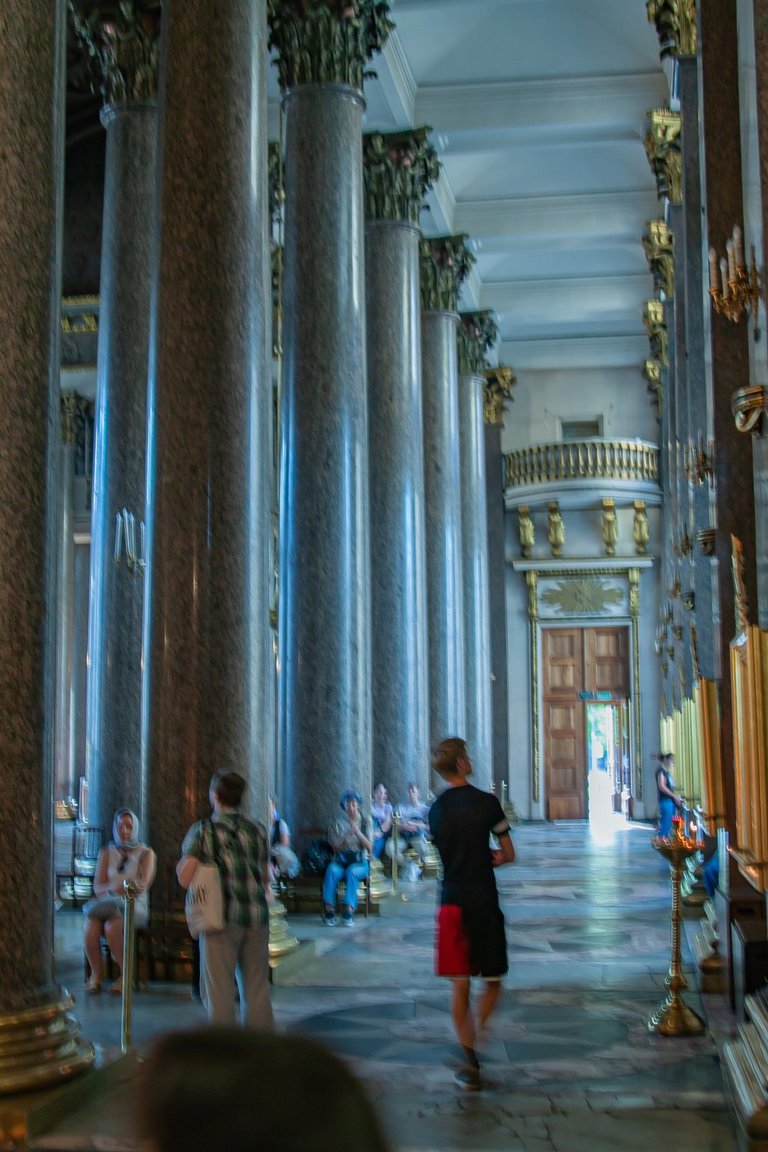
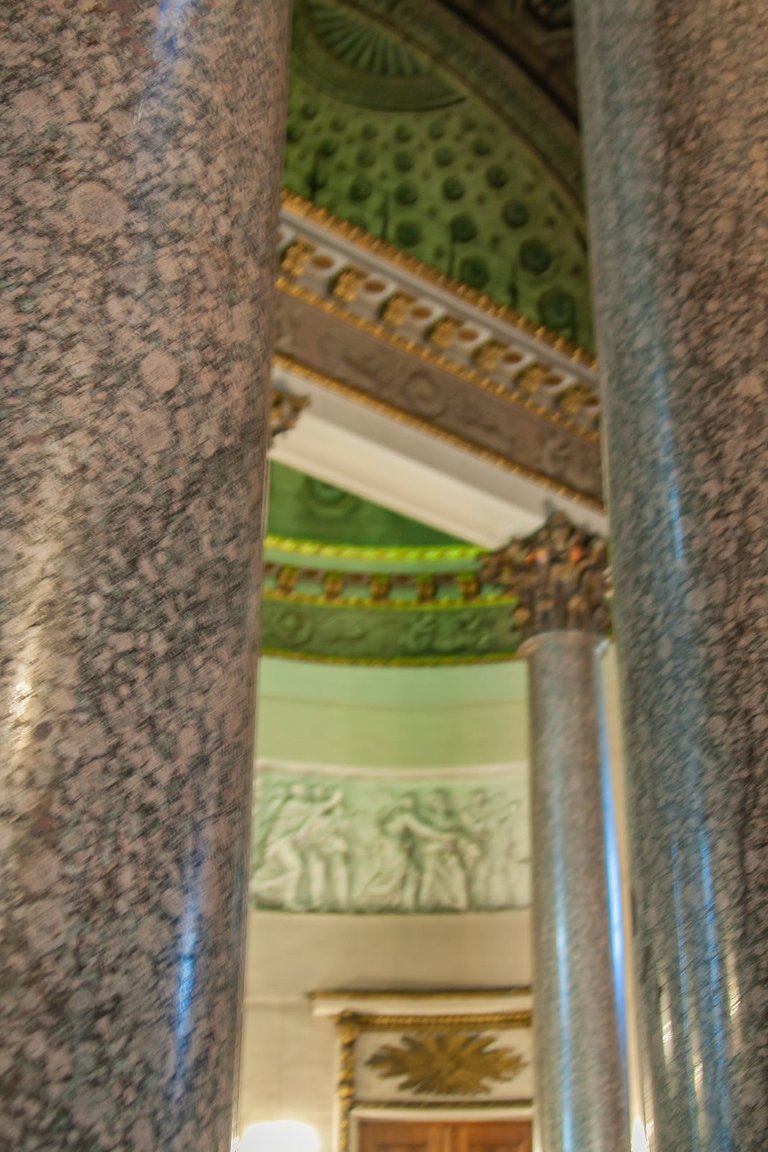
In addition, the history of the origin of the granite columns of the temple interior is of interest. The material from which they are made is dark red granite, which the builders called "rotten stone". The fact is that this material was mined in the Vyborg marshes and there was a putrid smell from it.
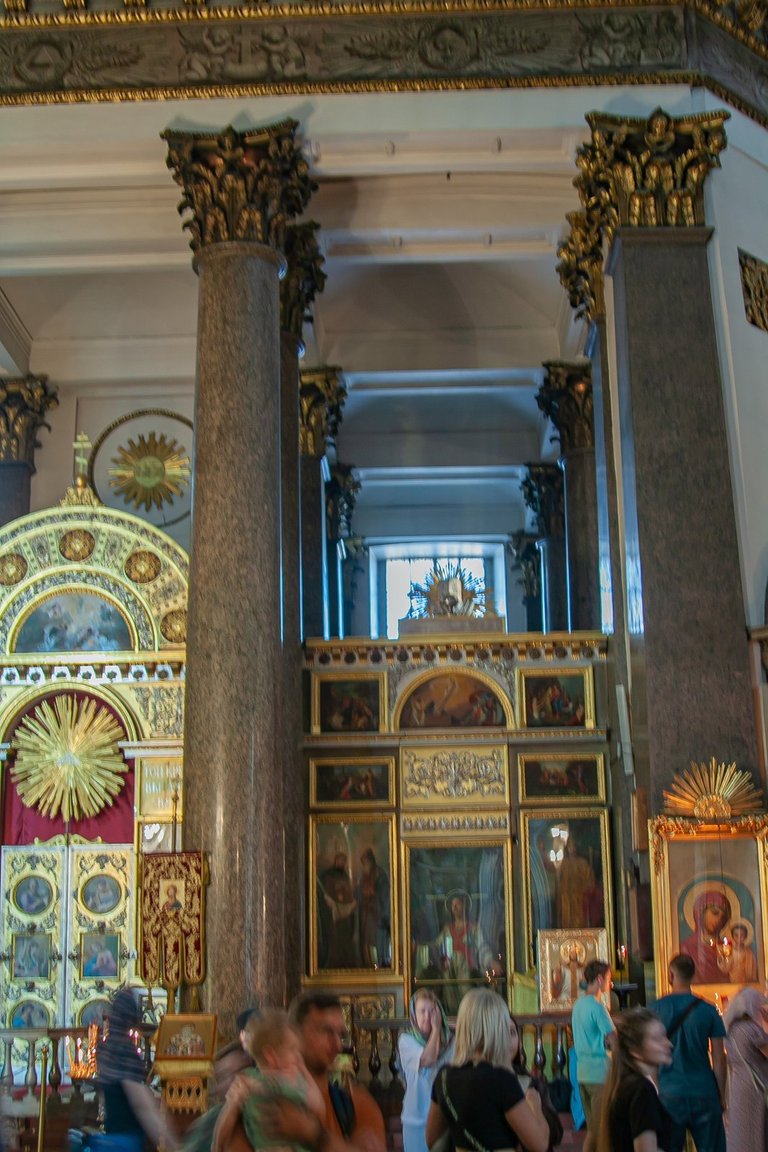
The construction of the cathedral was completed shortly before the outbreak of the war with Napoleon. After the victory, two monuments to Russian commanders who played a decisive role in the victory over the enemy – Mikhail Kutuzov and Barclay de Tolly - were erected next to the temple. These monuments still stand in their former places in front of the facade of the cathedral.
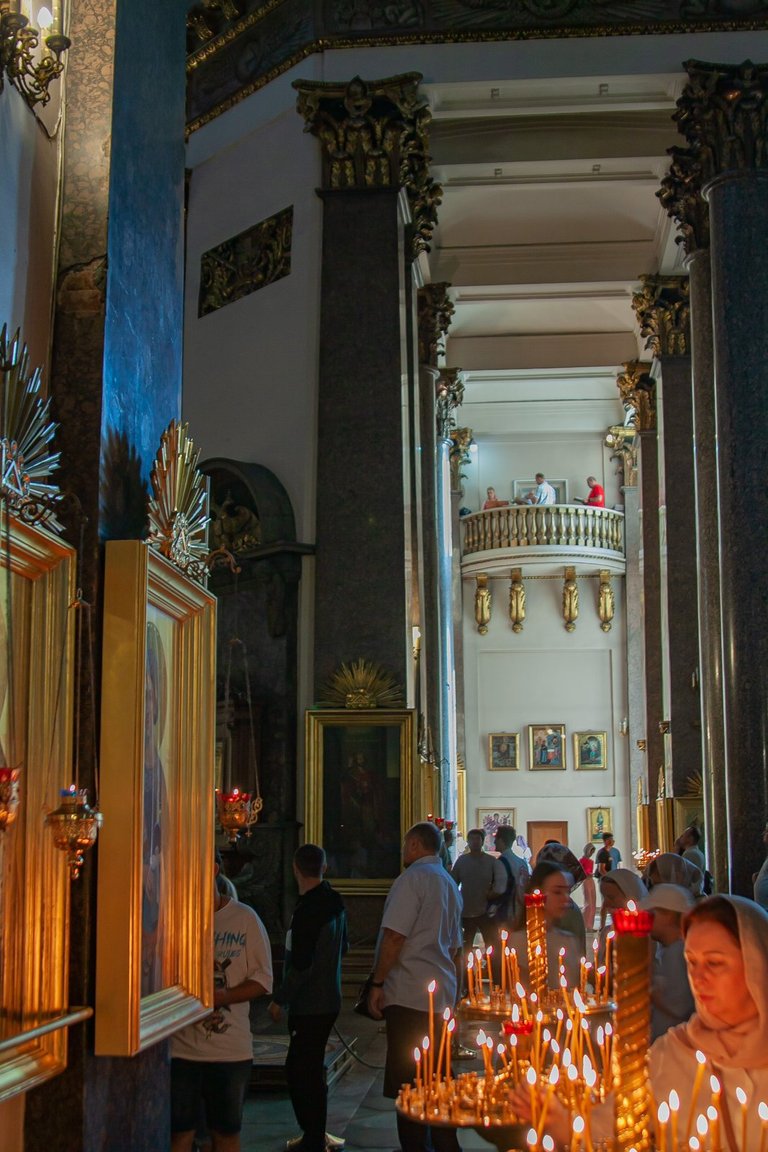
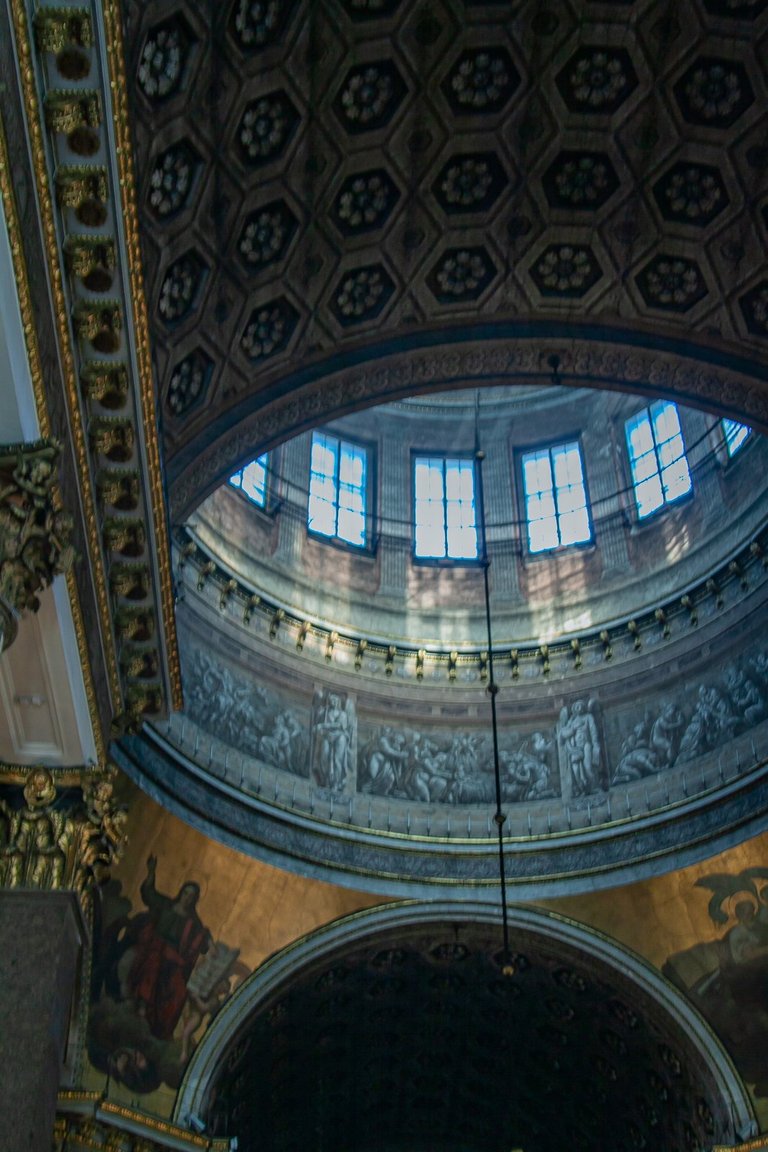
As for Field Marshal Kutuzov, his ashes are buried in the walls of the cathedral. Such an honor has always been awarded only to royalty or people who have played an important role in the history of the country. A slab can be seen in the floor of the temple, where it is indicated that the body of the great commander rests here.
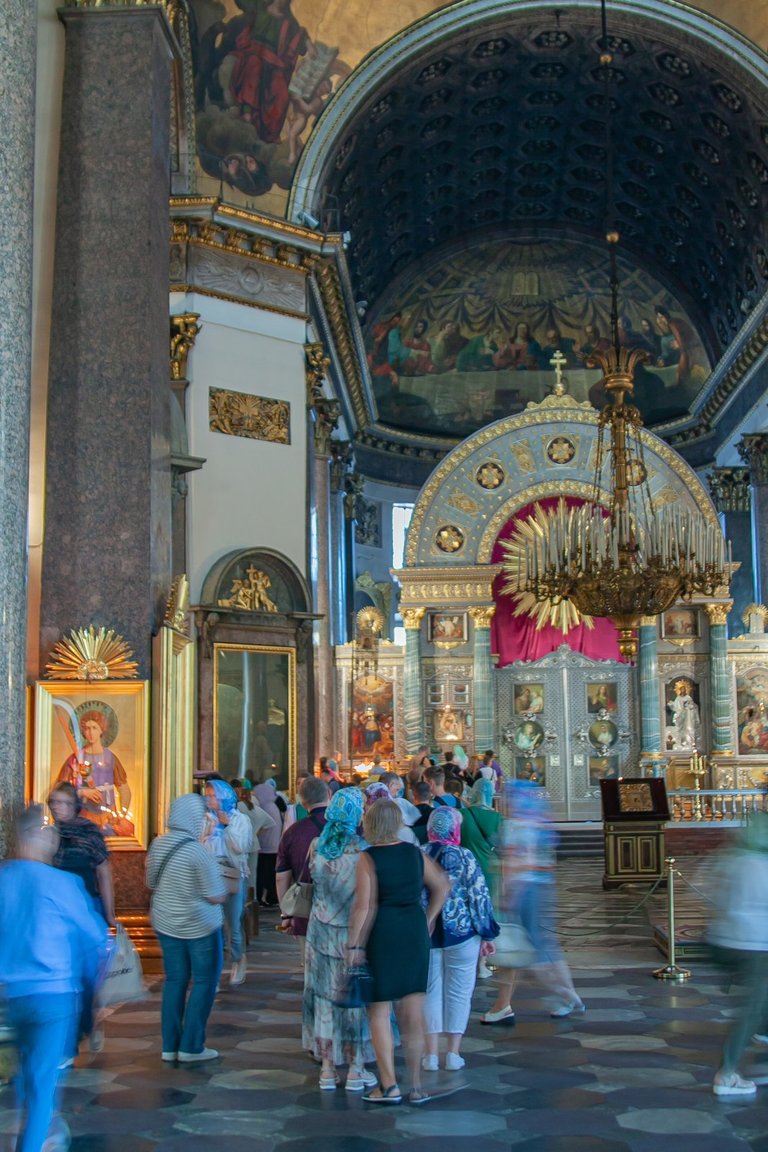
If you look closely, you can see Masonic symbols here and there in the symbolism of the temple. The fact is that in those years (at the turn of the XVIII and XIX centuries) in Russia there were both Freemasons and knights of the Order of Malta. It was customary for various sacred places to be endowed with mystical symbols.

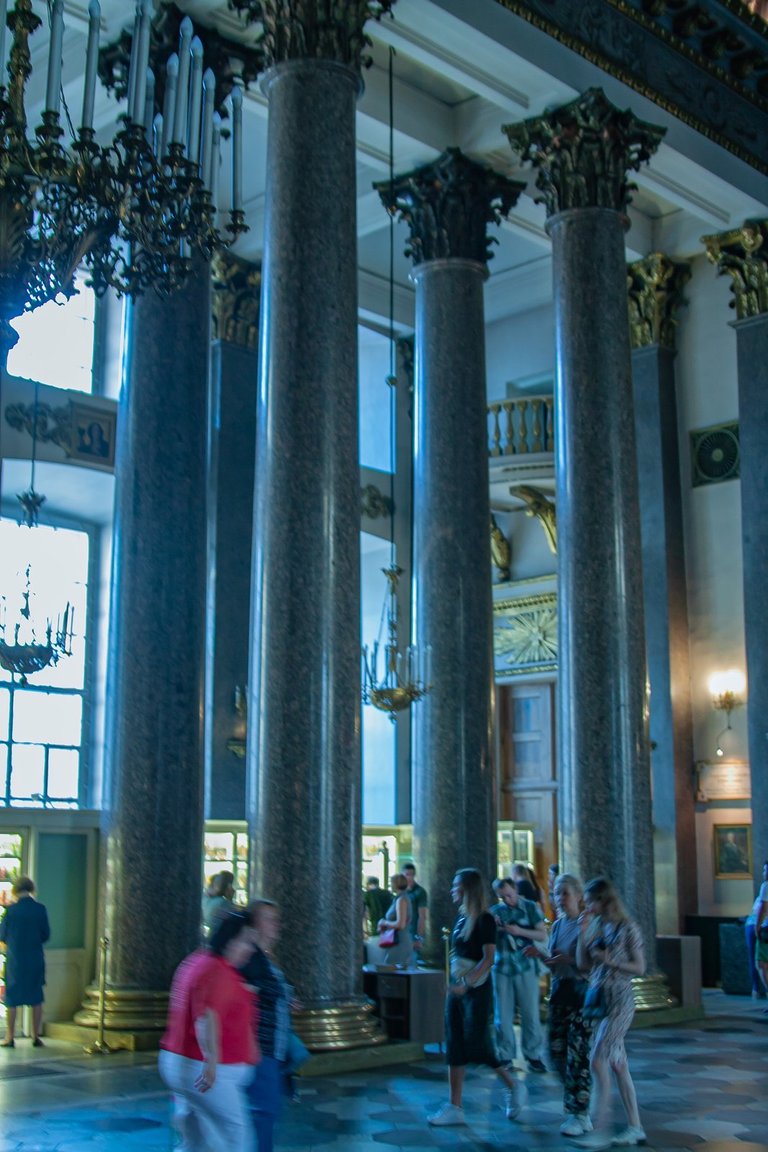
In narrow intellectual circles, there is a conspiracy point of view, which claims that the city on the Neva existed even before Peter I arrived here with the builders. It is claimed that the emperor did not build the city from scratch, but restored and completed dilapidated houses and temples.
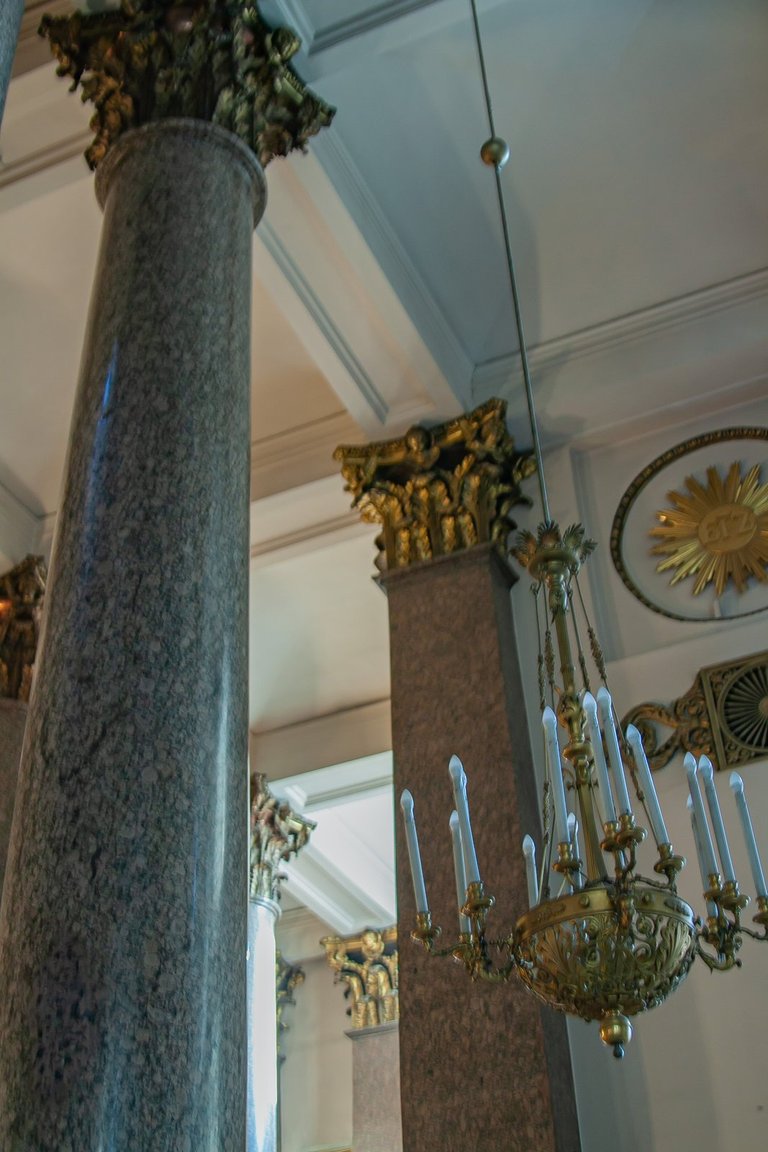
I will neither confirm nor refute such a point of view. But the idea does not seem so meaningless due to the fact that there are some oddities and inconsistencies both in history, in ancient maps, engravings, and in the construction methods of some buildings and temples. Kazan Cathedral, by the way, also belongs to such monuments, where construction technologies were used, which humanity does not possess today.


This concludes my voluminous story about the Kazan Cathedral of St. Petersburg. Very soon I will tell you about the last day of my August vacation. We will go to Kronstadt, and there we will have a long and interesting adventure. And that's it for today!
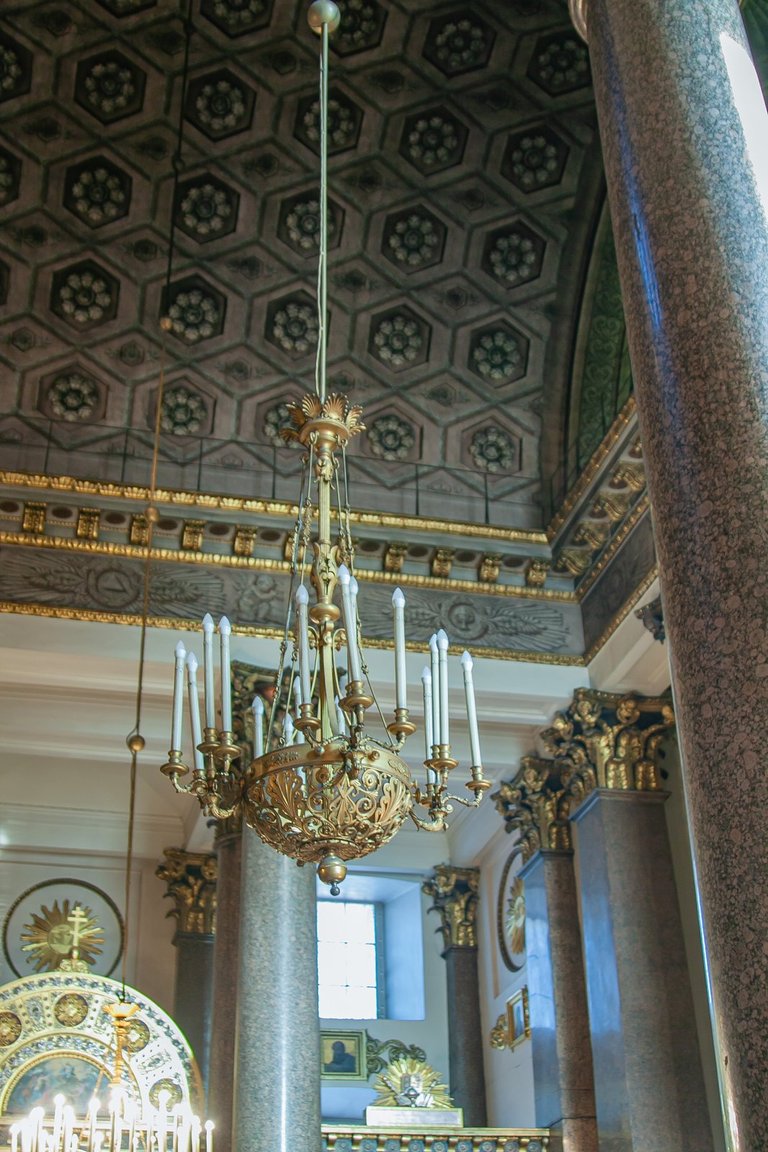
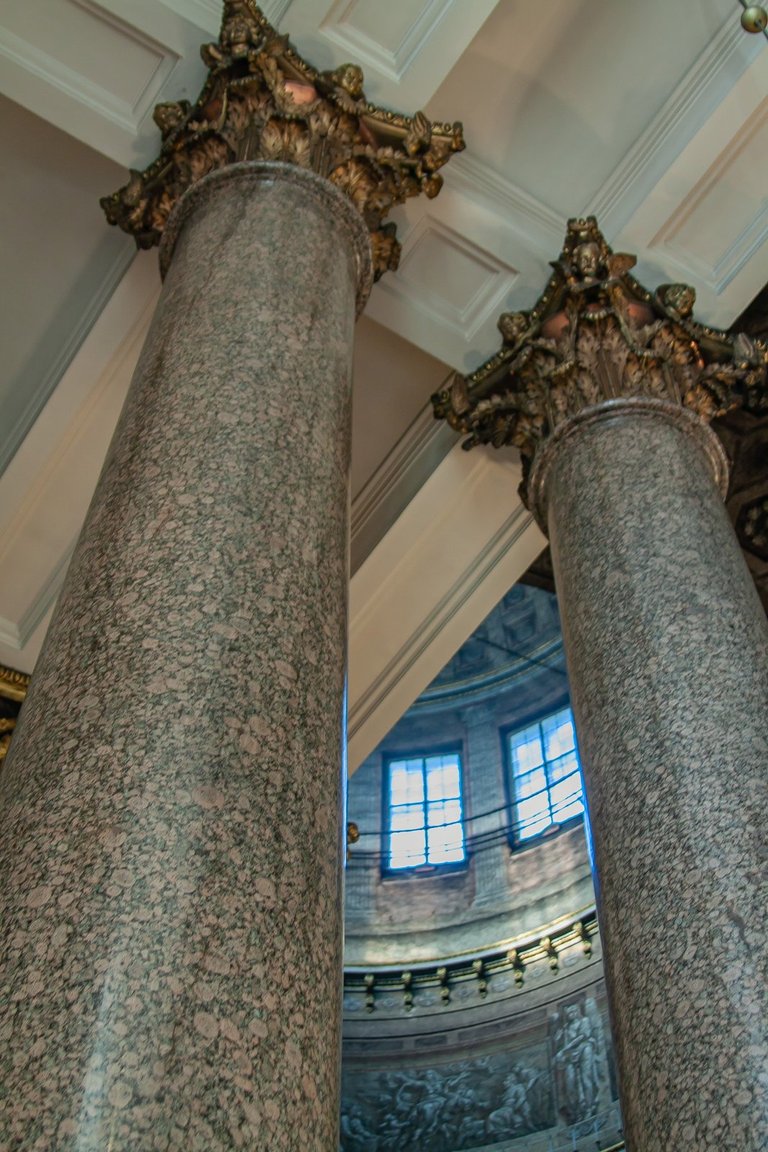
Привет всем моим читателям! Сегодня я запланировал для вас сделать обзор своего посещения Казанского собора в Петербурге. Я расскажу некоторые факты об этом сооружении и покажу фотоснимки, сделанные внутри и снаружи храма.
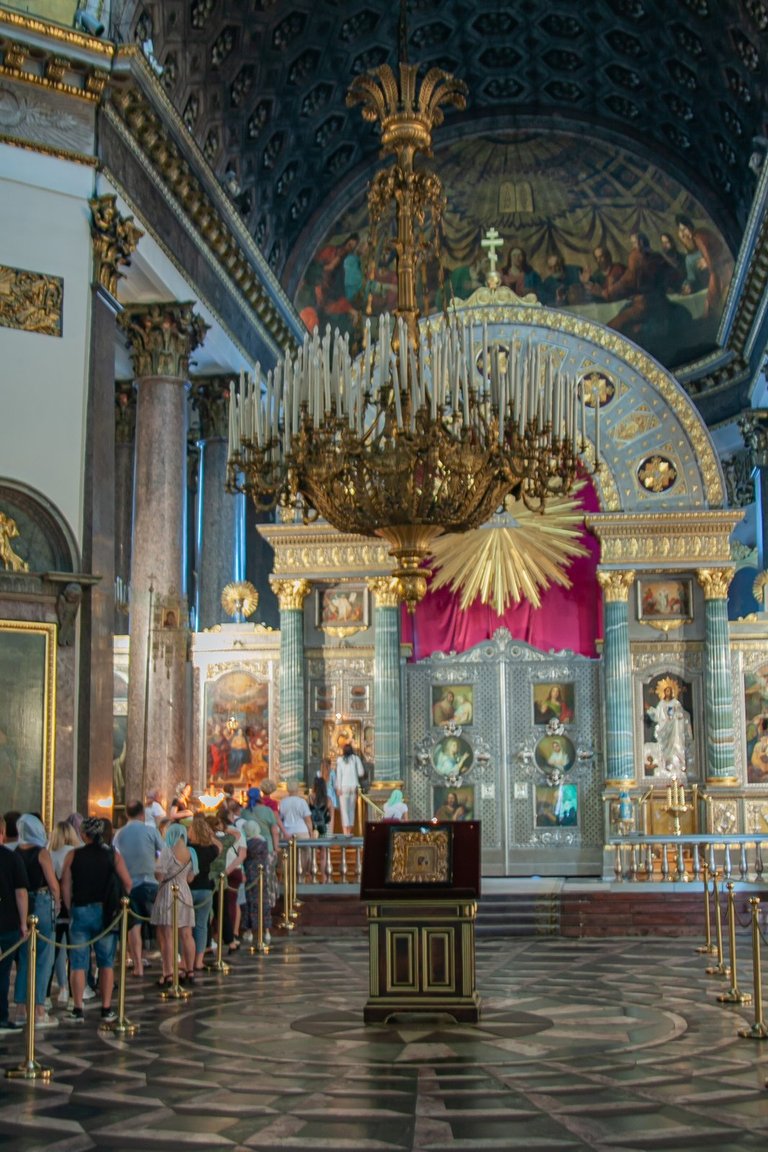
СПРАВКА ИЗ СЕТИ: Казанский собор возводился по проекту архитектора Андрея Никифоровича Воронихина с 1801 по 1811 гг. Он строился на том месте Невского проспекта, где находилась скромная церковь Рождества Богородицы. В этой церкви хранилась одна из главных петербургских святынь — чудотворная икона Казанской Божией Матери. Строился собор по повелению императора Павла I именно для этой иконы, как кафедральный собор Санкт-Петербурга. По желанию Павла I внешними очертаниями собор напоминает храм Святого Петра в Риме. На строительстве собора были задействованы тысячи рабочих. Собор строился из материалов исключительно отечественного, преимущественно карельского, происхождения. Высота собора - 71.5 м Внутренние колонны высечены из огромных гранитных монолитов, весом до 30 тонн каждая.
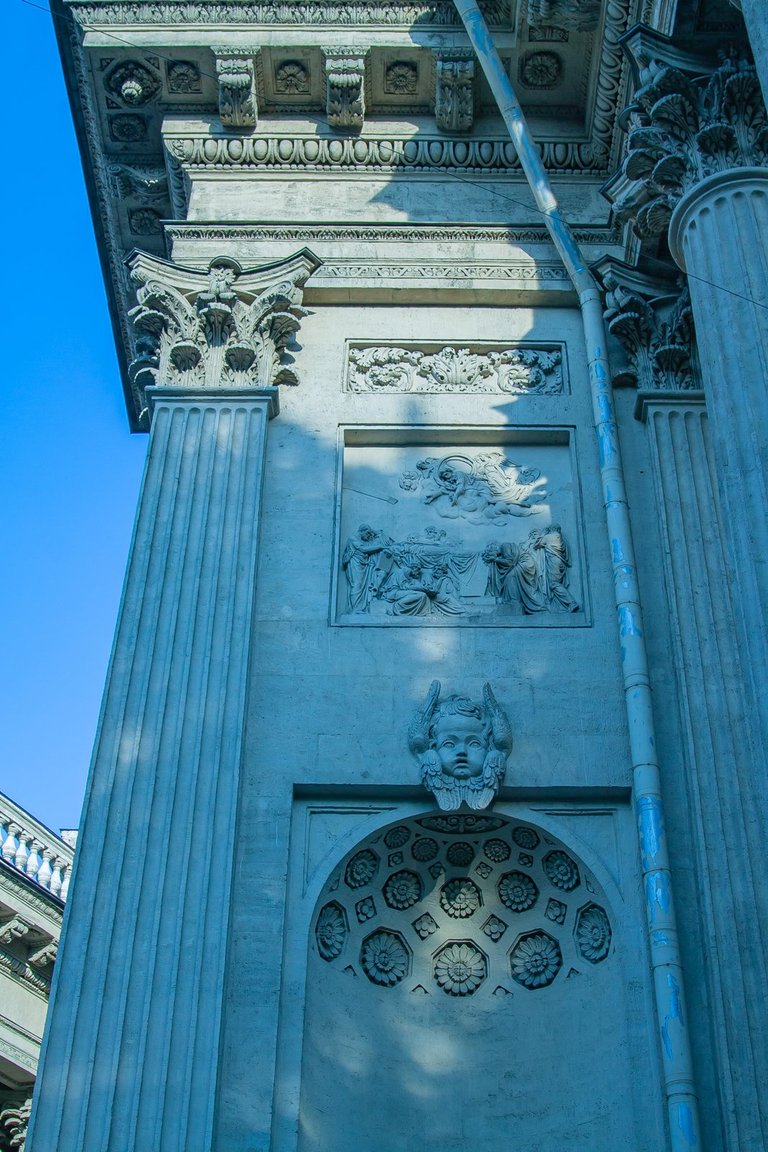
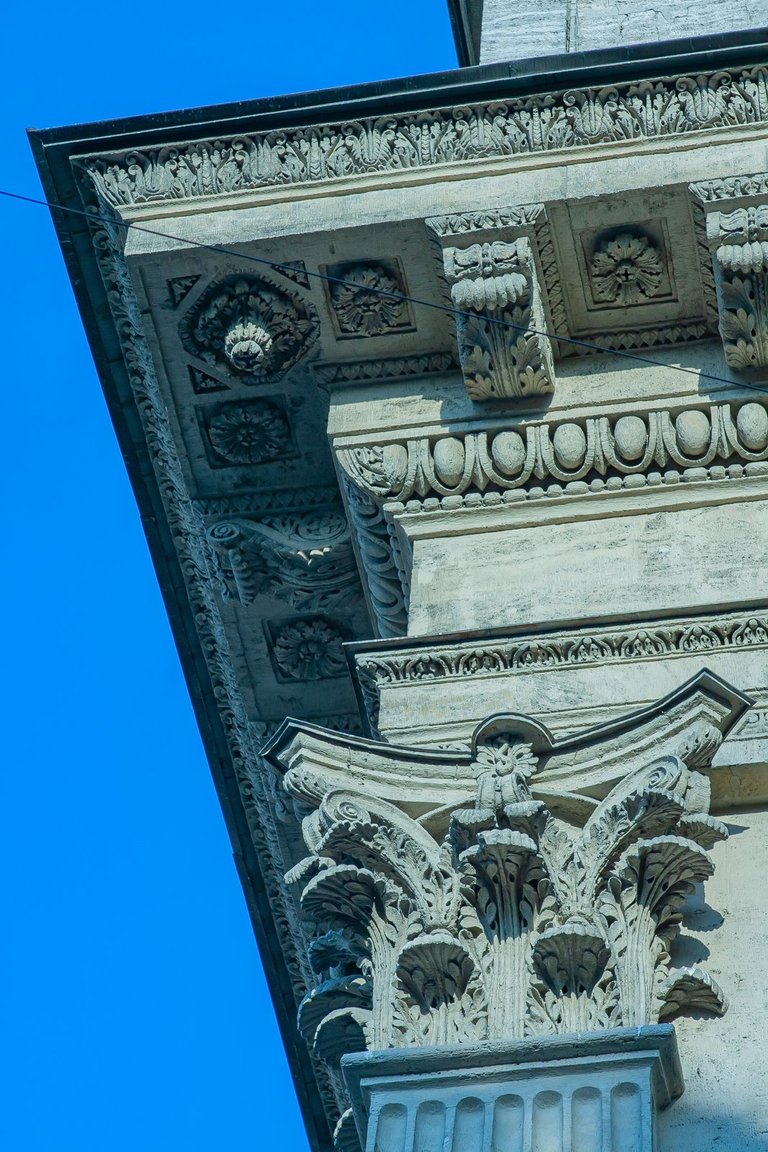
Если снаружи собор отделан серым известняком, то внутри всё иначе. Здесь установлены гранитные колонны, внутри всё обустроено так, как в обычных православных храмах России. Но если сравнивать интерьеры Казанского собора с Исаакиевским собором, то здесь всё гораздо скромнее.
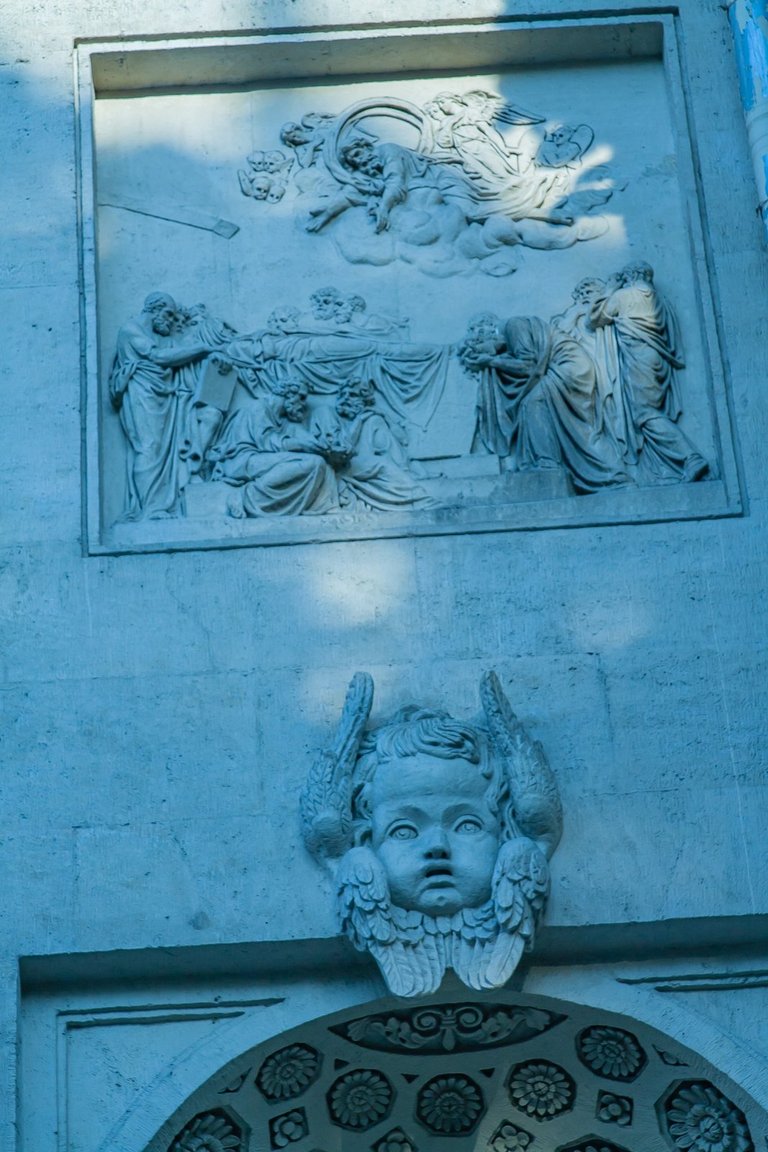
Поражает высота потолков храма. Из-за того, что здесь довольно узкие галереи, кажется что колонны уходят в бесконечную высь. Скрашивает это несоответствие множество бронзовых люстр, низко свисающих с потолков на длинных штангах.
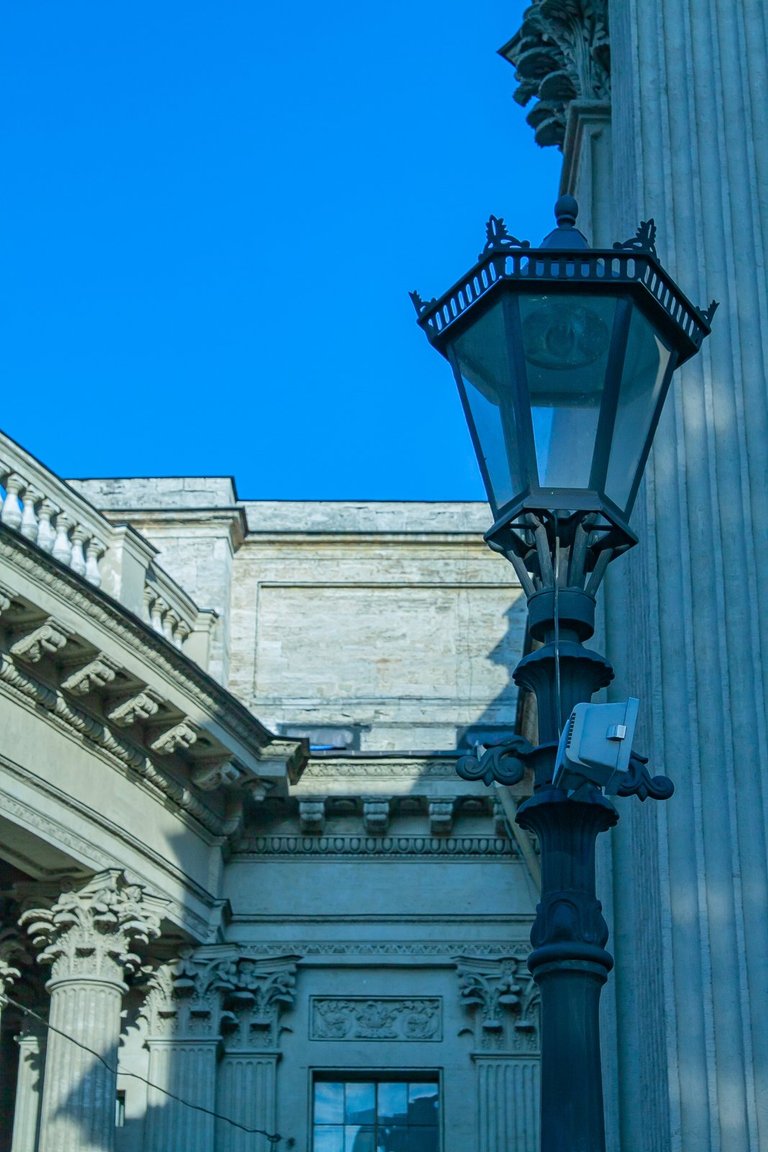
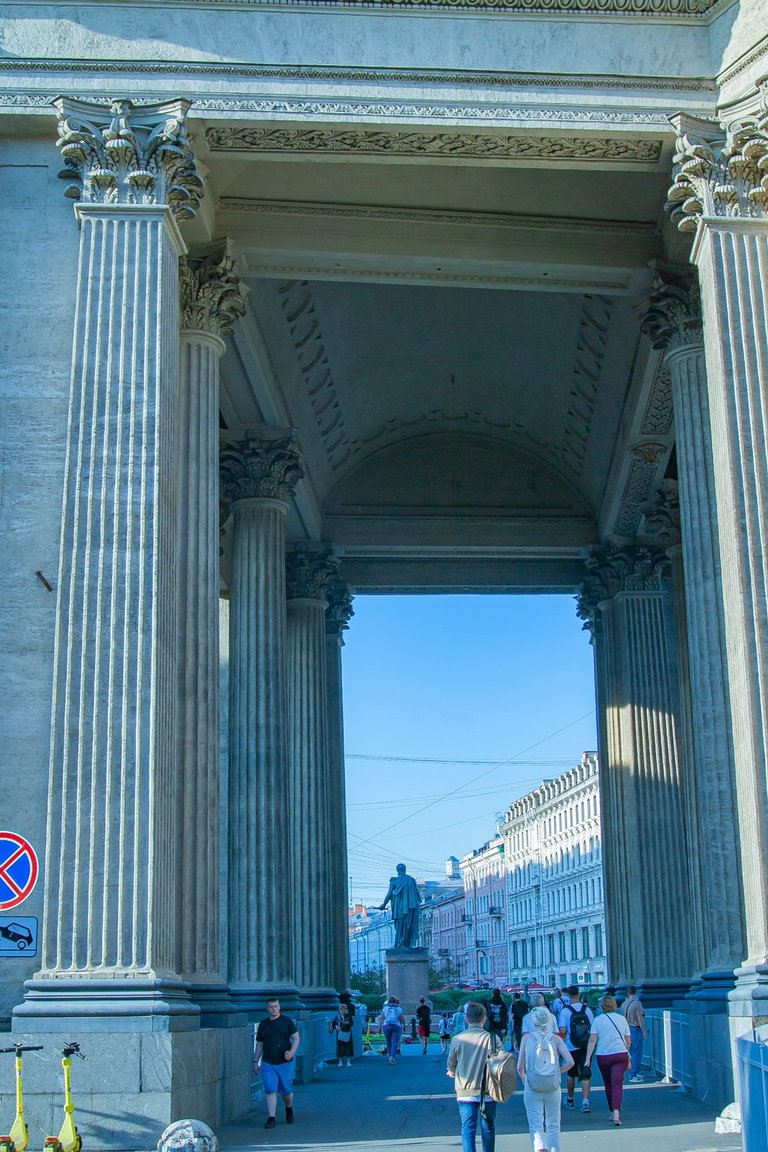
Качество освещения в соборе довольно слабое. Сюда свет поступает из небольших витражей и окошек, расположенных вдоль стен. Сам главный купол довольно небольшой по сравнению с Исаакиевским и не так прозрачен. Лучи солнца, падающие сквозь центральный фонарь купола, не дают сильного рассеянного освещения и всё здесь кажется довольно мрачным, словно в средневековых замках.
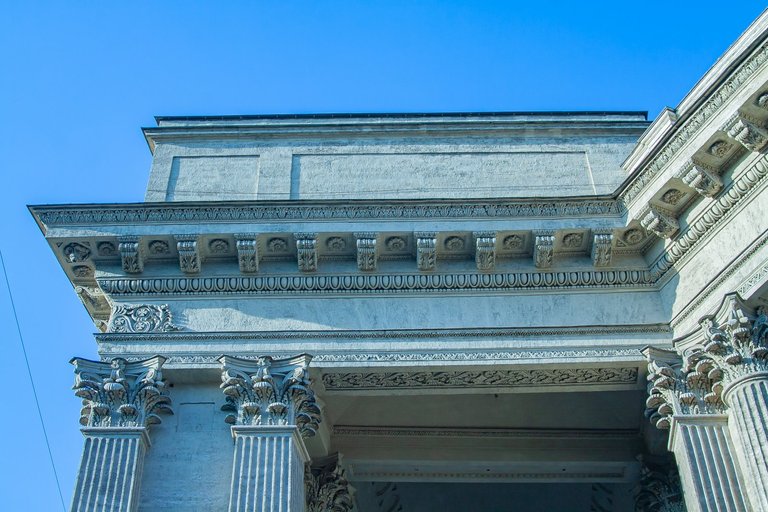
В дополнение к этому интерес представляет история происхождения гранитных колонн интерьера храма. Материл, из которого они изготовлены – это тёмно-красный гранит, который строители называли "гнилым камнем". Дело в том, что этот материал добывали в выборгских болотах и там от него шёл гнилостный запах.
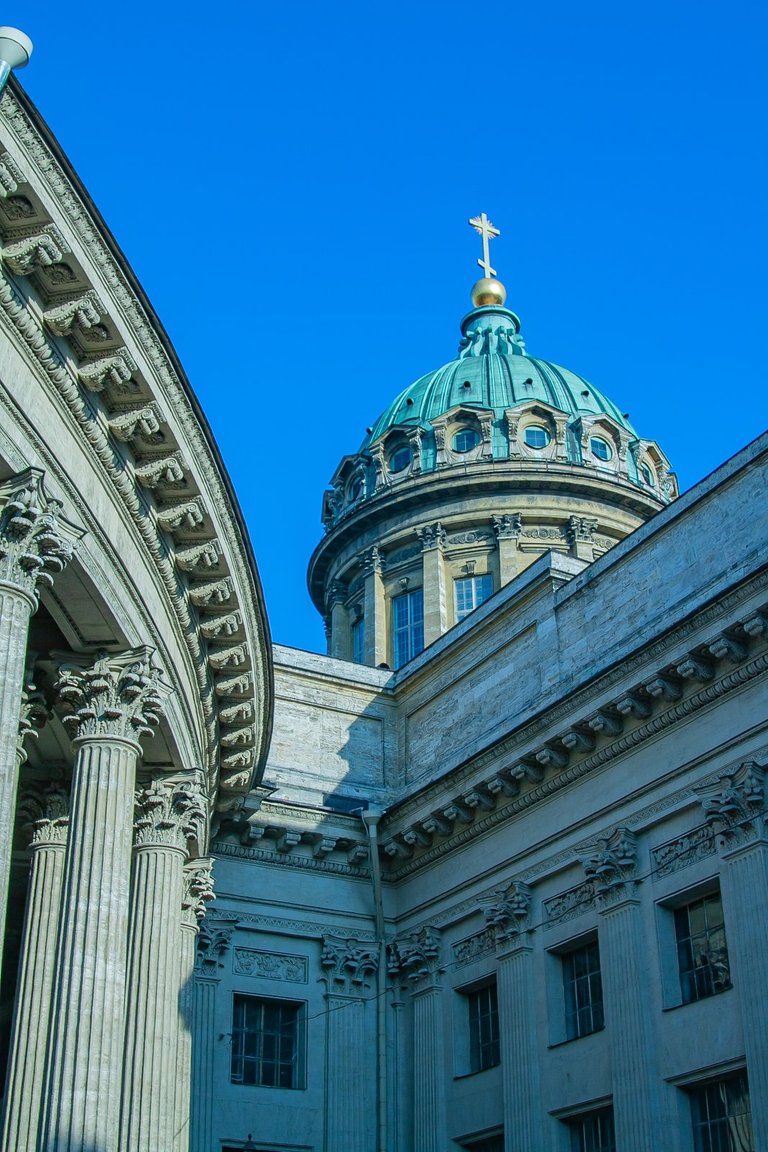
Строительство собора завершили незадолго до начала войны с Наполеоном. После победы рядом с храмом установили два памятника русским полководцам, которые сыграли решающее значение в победе над врагом – Михаилу Кутузову и Барклаю де Толли. Эти монументы до сих пор стоят на своих прежних местах перед фасадом собора.
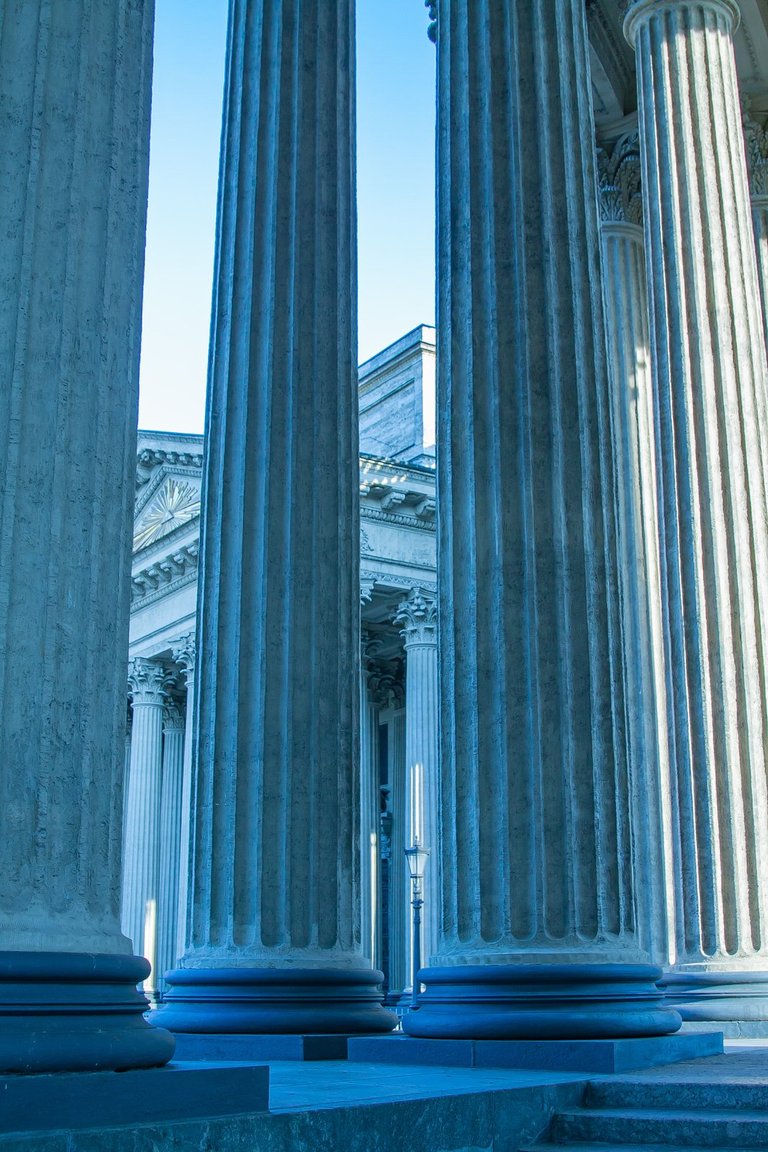

Что же касается фельдмаршала Кутузова, то его прах похоронен в стенах собора. Подобной чести удостаивались всегда лишь царственные особы или люди, сыгравшие важную роль в истории страны. В полу храма можно разглядеть плиту, где указано - здесь покоится тело великого полководца.
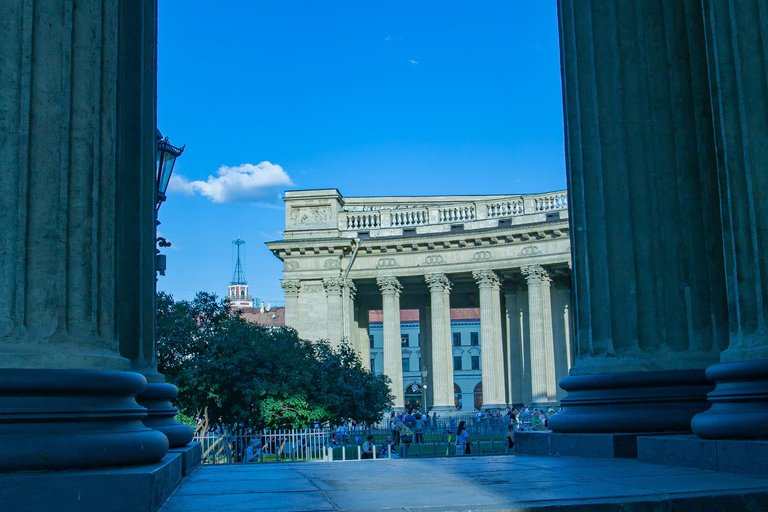
Если внимательно присмотреться, тут и там в символике храма можно разглядеть масонские символы. Дело в том, что в те годы (на рубеже XVIII и XIX столетий) в России существовали как масоны, так и рыцари Мальтийского ордена. Так было принято, чтобы разные священные места наделялись мистической символикой.
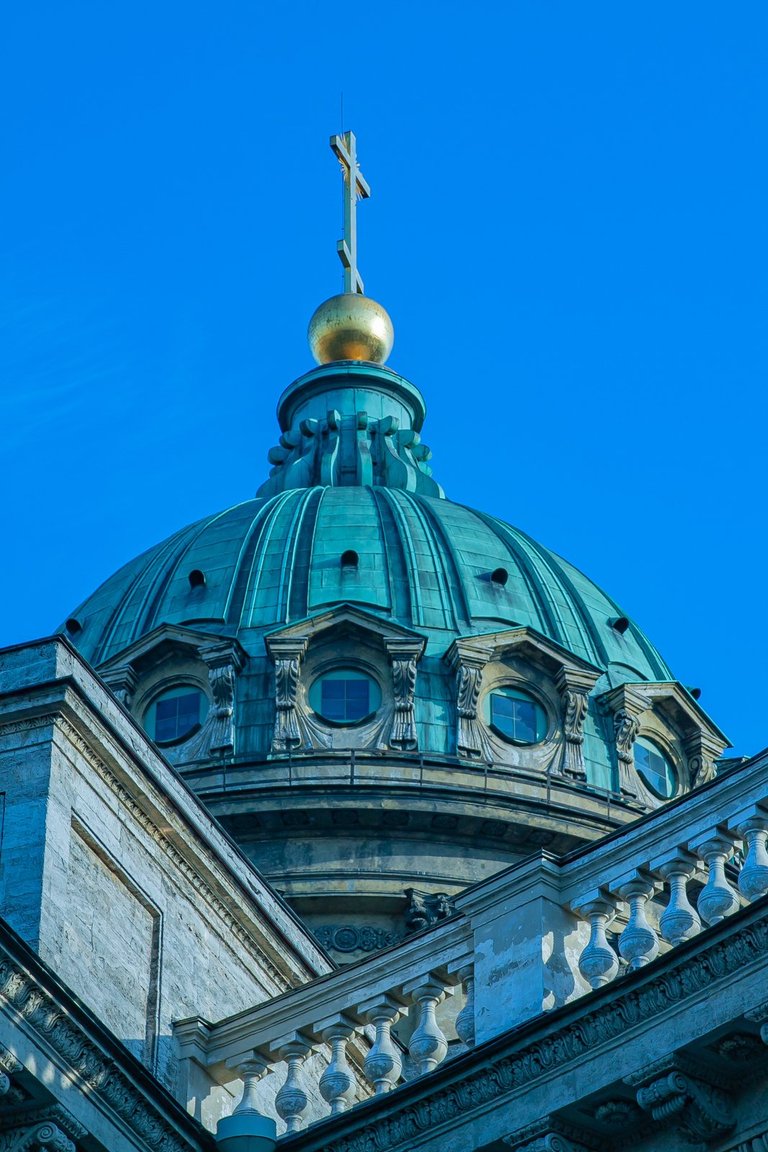
В узких интеллектуальных кругах есть конспирологическая точка зрения, в которой утверждается, будто город на Неве существовал ещё до того, как сюда со строителями прибыл Пётр I. Утверждается, будто император не построил город с нуля, а восстановил и достроил полуразрушенные дома и храмы.

Я не стану ни подтверждать, ни опровергать подобную точку зрения. Но идея не кажется такой уж бессмысленной в силу того, что есть некоторые странности и нестыковки как в истории, в старинных картах, гравюрах, так и в методах строительства некоторых зданий и храмов. Казанский собор, кстати, тоже относится к таким памятникам, где использовались технологии строительства, которыми человечество сегодня не обладает.
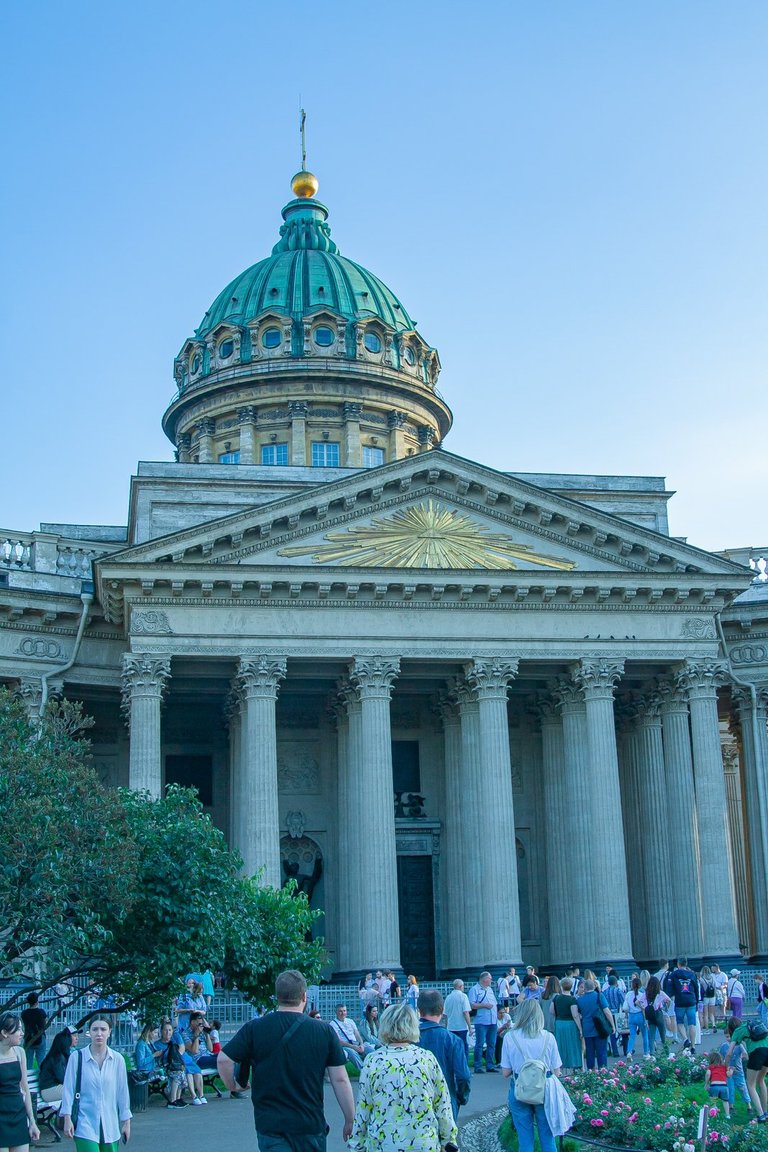
На этом я завершаю свой объёмный рассказ о Казанском сооре Петербурга. Очень скоро я поведаю вам о последнем дне своего августовского отпуска. Мы отправимся в Кронштадт, и там нам предстоит долгое и интересное приключение. А на сегодня у меня всё!
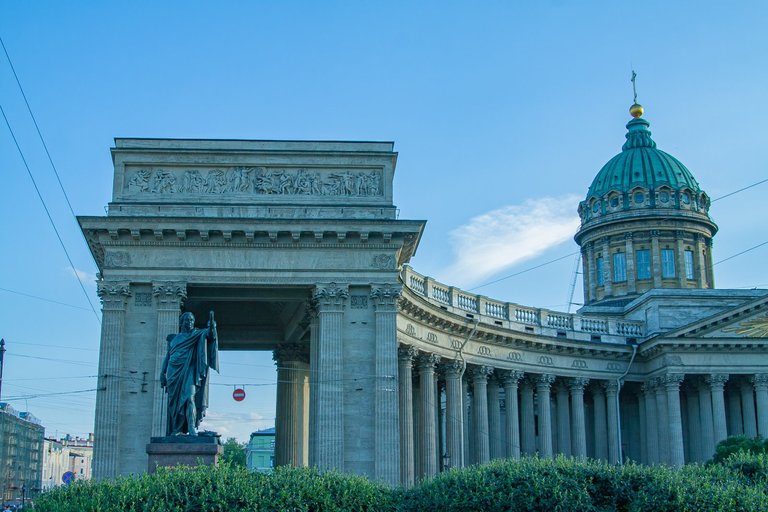

Congratulations, your post has been added to Pinmapple! 🎉🥳🍍
Did you know you have your own profile map?
And every post has their own map too!
Want to have your post on the map too?